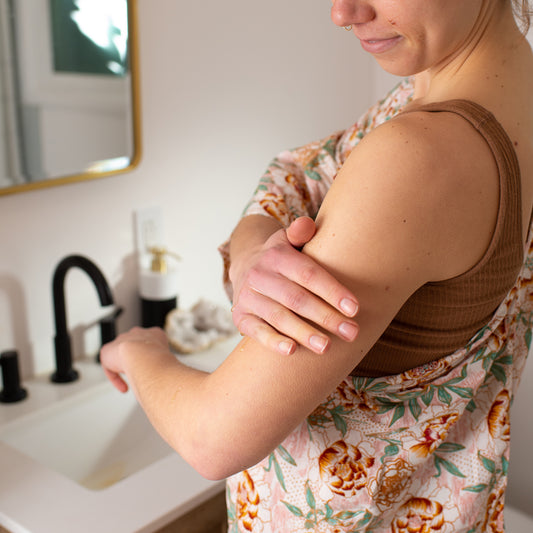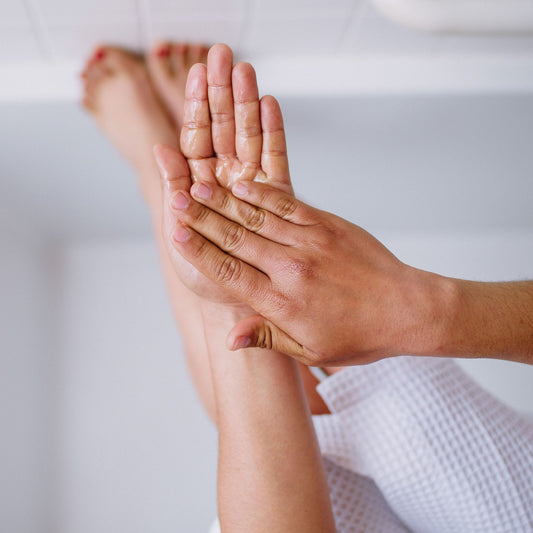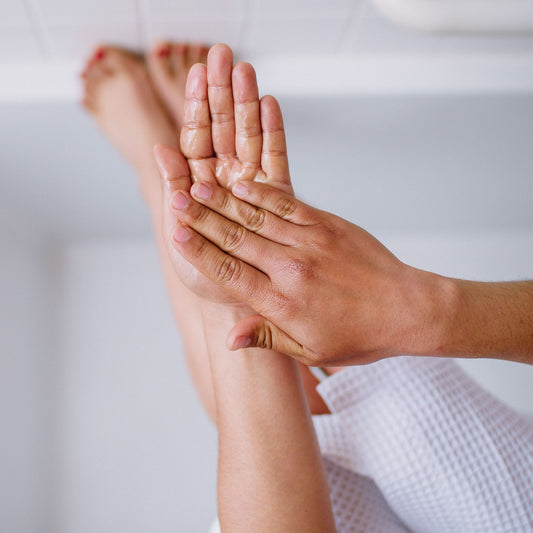Winter has settled its blanket of arctic air on the northern hemisphere. You can feel the pervasive cold and dryness at a deep level. The days are short. Nature is quiet, resting in the long frozen nights. The animals and the trees are in hibernation, adapting with the seasonal shifts. Can we do less?
Knowledge is power when it comes to aligning with the seasons. With the understanding of the
Oil massage keeps the body's first line of defense, the skin, lubricated and healthy. Our skin and biome face a very challenging environment filled with the effects of the gunas, modern world pollution, harsh soaps, and chemicals, all in combination. The probiotic organisms that live on our skin make up our skin biome. This outer biome helps protect us and helps us stay well. How?
- Supports healthy skin-level immune response to common allergens
- Supports the skin's response to occasional inflammation
- Supports the skin's protective barrier function
- Makes us more or less attractive to biting insects
At a fundamental level, oil massage supports healthy immunity and
Why oil and not lotion? Oils are a natural substance, a healthy fat that the body can use directly. It is clean, unlike lotion (which can often contain preservatives and other ingredients that are foreign to the body and contribute to
If you are overwhelmed at the thought of rubbing oil on your whole body in the morning, you are not alone. You can still help balance seasonal induced dryness. Start simply, before you go to bed.

Remove any makeup. Rinse your face with water. Use oil that feels and smells good to you that is designed for use on the skin (cooking oil won't feel good!). Stick a little oil on your little (pinky) finger. Use enough oil not to drag on the skin, but not so much you drip oil in your eyes or mouth.
- Circle each eye 3 circles in each direction on the orbital socket
- Circle your mouth 3 circles in each direction
- Circle your third eye 3 circles in each direction (between your eyebrows)
- Rub oil in and behind your ears
- Rub oil in your nostrils
- Rub oil on all your fingertips and stroke gently upwards from your sternum to your chin
- Rub any excess oil on your fingers into your hands
The benefits of this simple practice will motivate you to engage with self-massage when the time is right for you. You can do it in the morning after your shower as well. Teach it to your kids and introduce them to oil massage.
If your face is off-limits for some reason, rub oil into your feet before bed. Spend 5 minutes rubbing your feet, put on a pair of clean cotton socks and tuck yourself in. Foot massage is another simple form of abhyanga that can help you sleep more easily.
Self-massage is a relaxing, nourishing ritual to help you balance your health through the cold winter season. Start simply with this healthy practice. Grow your self-massage practice to regular full body abhyanga and reap even greater benefits when you are ready.









